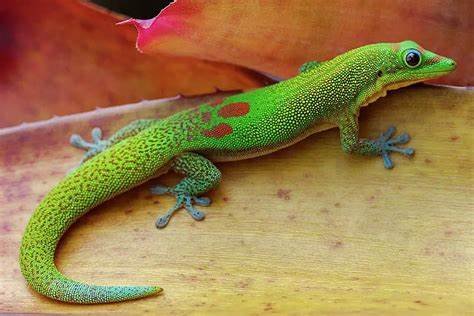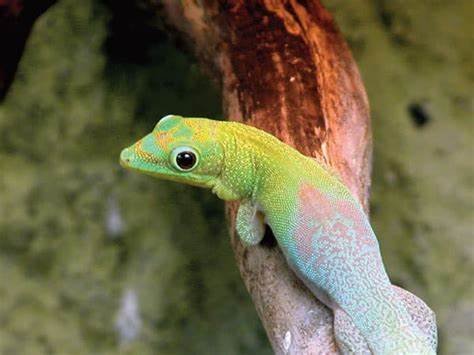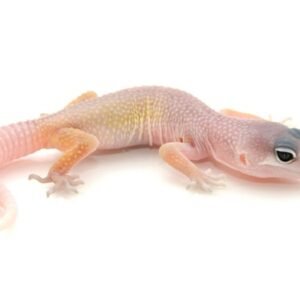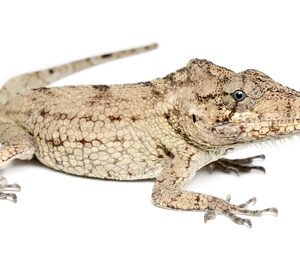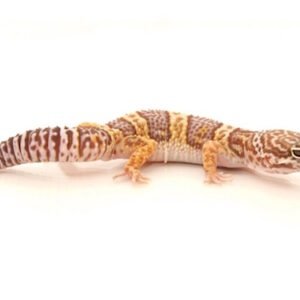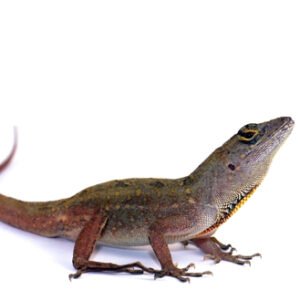Habitat and Distribution of the Golden Day Gecko
golden day gecko ,The golden day gecko, scientifically known as Phelsuma laticauda, is a captivating species that predominantly inhabits tropical and subtropical regions. This gecko is widely distributed across various islands within the Indian Ocean and the Pacific, reflecting its adaptability to diverse environments. These geckos thrive in lush, moist forests, where they can find ample shelter and foraging opportunities. The dense foliage provides not only cover from potential predators but also an abundant supply of insects, which constitute their primary food source.
Coastal areas are another preferred habitat for the golden day gecko. They are often observed basking on warm rocks or trees near beaches, where the humidity levels are beneficial for their skin and respiratory health. These coastal environments not only support the gecko’s dietary needs but also ensure access to essential sunlight, which is crucial for their thermoregulation. In addition to natural habitats, golden day geckos have also adapted to urban environments, commonly seen clinging to man-made structures such as buildings and fences. This adaptability helps them exploit food sources such as small insects attracted to outdoor lighting.
Various factors influence the distribution of the golden day gecko, especially climate change and habitat destruction. Increasing temperatures and shifting weather patterns can alter the availability of their preferred habitats, leading to potential declines in local populations. Additionally, deforestation and urbanization pose significant threats by reducing the natural landscapes that these reptiles depend on for survival. The ongoing loss of habitat makes it imperative to monitor and conserve necessary ecosystems, not only for the golden day gecko but for broader biodiversity as well.
Behavior and Characteristics of the Golden Day Gecko
The golden day gecko, recognized by its striking coloration, is a small to medium-sized lizard native to the lush environments of Madagascar and surrounding islands. This reptile exhibits an array of vibrant green and yellow hues, which serve not only for aesthetic appeal but also provide effective camouflage among the foliage of their habitat. The blending of colors allows golden day geckos to evade potential predators, ensuring their survival in a rich ecosystem teeming with threats.
Typically measuring between 4 to 8 inches in length, these geckos display a wide range of behaviors that further enhance their adaptability. They are primarily diurnal, which means they are most active during daylight hours. This activity pattern allows them to heat up efficiently to maintain their metabolic functions while taking advantage of abundant food resources. Their diet consists mainly of insects and other small invertebrates, reflecting their role as both predator and prey within their ecological niche.
Socially, golden day geckos exhibit interesting behaviors that include mating rituals characterized by vibrant displays and intricate courtship behaviors. Male geckos often demonstrate territoriality, using body language to communicate dominance through head bobbing and displaying their bright colors. This interactive behavior not only impacts their reproductive success but also influences the social structure within their populations. In terms of predation avoidance, these lizards employ various strategies, including rapid movements and hiding within vegetation when faced with threats.
Interactions with other species in their environment also highlight the golden day gecko’s role in maintaining ecological balance. By preying on insects, they contribute to pest control, showcasing their importance in a complex food web. Overall, the unique characteristics and behaviors of the golden day gecko paint a vivid picture of a species well-adapted to thrive within its natural habitat.

